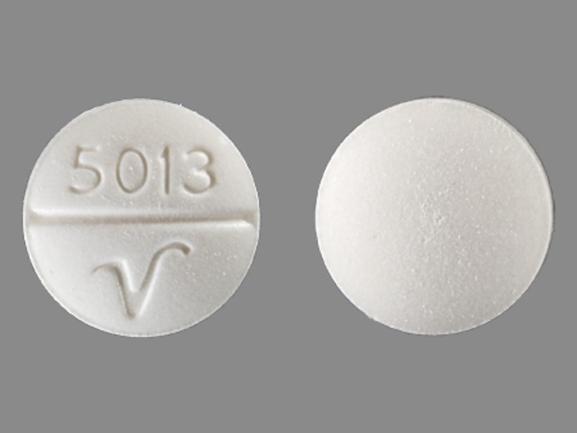Phenobarbital Dosage
Medically reviewed by Drugs.com. Last updated on Nov 29, 2024.
Applies to the following strengths: 15 mg; 30 mg; 100 mg; 60 mg; 20 mg/5 mL; 130 mg/mL; 30 mg/mL; 60 mg/mL; 16 mg; 16.2 mg; 15 mg/5 mL; 32.4 mg; 64.8 mg; 97.2 mg; 65 mg/mL; sodium; 30 mg/5 mL; 10 mg/mL-NaCl 0.9%
Usual Adult Dose for:
Usual Pediatric Dose for:
Additional dosage information:
Usual Adult Dose for Sedation
Daytime Sedation:
30 to 120 mg orally, IM, or IV in 2 or 3 divided doses
Maximum dose: 400 mg during a 24-hour period
Preoperative Sedation:
Parenteral:
100 to 200 mg IM 60 to 90 minutes before surgery
Comments:
- Frequency of administration should be determined by the patient response.
- Parenteral administration should be reserved for situations in which oral administration is impossible/impractical.
Uses: Daytime sedation; preoperative sedation
Usual Adult Dose for Insomnia
Oral:
- Recommended dose: 100 to 200 mg orally once a day
- Maximum dose: 400 mg during a 24-hour period
Parenteral:
- Recommended dose: 100 to 320 mg IM or IV once a day
- Maximum dose: 400 mg during a 24-hour period
Comments:
- This drug may begin to lose effectiveness for inducing and maintaining sleep after 2 weeks.
Uses: Bedtime hypnosis; hypnosis
Usual Adult Dose for Seizures
Acute Convulsions
Parenteral:
20 to 320 mg IM or IV every 6 hours as necessary
Anticonvulsant:
Oral:
60 to 200 mg orally per day
Comments:
- Maintenance doses should be determined by clinical laboratory reference values.
- Prevention of febrile seizures may not influence the development of epilepsy.
Uses: Treatment of generalized and partial seizures; treatment/prophylaxis of febrile seizures
Usual Pediatric Dose for Seizures
Anticonvulsant:
Oral:
- Initial dose: 15 to 20 mg/kg orally
- Recommended dose: 3 to 6 mg/kg orally
Parenteral:
4 to 6 mg/kg/day for 7 to 10 days or 5 to 15 mg/kg/day IM or IV
Status epilepticus:
Parenteral:
- Initial dose: 15 to 20 mg/kg IV over 10 to 15 minutes
Comments:
- Loading doses of 15 to 20 mg/kg are predicted to produce blood levels of approximately 20 mcg/mL after administration.
- Maintenance doses should be determined by clinical laboratory reference values.
- Prevention of febrile seizures may not influence the development of epilepsy.
Uses: Anticonvulsant used for the treatment of generalized and partial seizures, treatment/prophylaxis of febrile seizures, and treatment of status epilepticus.
Usual Pediatric Dose for Sedation
Parenteral:
1 to 3 mg/kg IM or IV
Use: Preoperative sedation
Renal Dose Adjustments
Dose adjustments may be required; however, no specific guidelines have been suggested. Caution recommended.
Liver Dose Adjustments
Mild to moderate liver impairment: Dose adjustments may be required; however, no specific guidelines have been suggested. Caution recommended.
Marked/severe liver impairment: Contraindicated
Dose Adjustments
- Geriatric or debilitated patients: This drug should be used at a reduced dosage due to an increased risk of sensitivity; however, no specific dose adjustment guidelines have been suggested.
- Clinical laboratory reference values should be used to determine the therapeutic anticonvulsant level of phenobarbital in serum.
- To achieve the blood levels considered therapeutic in children, higher per kg doses are generally necessary.
Therapeutic drug range: 5 to 40 mcg/mL (sedation)
Precautions
NARROW THERAPEUTIC INDEX:
- This drug should be considered a narrow therapeutic index (NTI) drug as small differences in dose or blood concentrations may lead to serious therapeutic failures or adverse drug reactions.
- Generic substitution should be done cautiously, if at all, as current bioequivalence standards are generally insufficient for NTI drugs.
- Additional and/or more frequent monitoring should be done to ensure receipt of an effective dose while avoiding unnecessary toxicities.
Consult WARNINGS section for additional precautions.
US Controlled Substance: Schedule IV
Dialysis
Data not available
Other Comments
Administration advice:
- The IV formulation should be diluted prior to use and the infusion rate should not exceed 60 mg/min in adults.
- If given IM, limit the volume to 5 mL per site. Injections should be administered deeply into large muscles.
Storage requirements:
- The manufacturer product information should be consulted.
Reconstitution/preparation techniques:
- The manufacturer product information should be consulted.
General:
- If discontinuation is necessary, this drug should be withdrawn slowly to prevent seizures or status epilepticus.
- Dosing should be based on a patient's age, weight, and condition.
- Anticonvulsant activity is believed to be present at sub-hypnotic doses.
Monitoring:
- Blood pressure, respiration, and cardiac function during IV administration or IM (at hypnotic doses).
- Hematopoietic, renal and hepatic function periodically, especially during long-term therapy.
- Bone mineral density, especially during prolonged treatment.
Patient advice:
- Advise patients, and families/caregivers to monitor and report signs/symptoms of suicidality, and/or unusual behavior immediately to their healthcare provider (e.g., agitation, irritability, anxiety, panic attacks, insomnia, hostility, aggressiveness, impulsivity, akathisia, hypomania/mania).
- Patients should be cautioned about performing activities requiring mental alertness, such as operating hazardous machinery or a motor vehicle, until they are reasonably certain that this drug does not adversely affect them.
- Patients should be told to avoid consuming alcohol while taking this drug.
- Instruct patients to immediately report any signs/symptoms of Stevens-Johnson syndrome, toxic epidermal necrolysis, hematological disease, or hypersensitivity reactions.
- Patients should be advised to report all concurrent prescription and nonprescription medications or herbal products they are taking.
- Advise patients to speak to their healthcare provider if they become pregnant, intend to become pregnant, or are breastfeeding.
More about phenobarbital
- Check interactions
- Compare alternatives
- Pricing & coupons
- Reviews (37)
- Drug images
- Side effects
- During pregnancy
- Support group
- Drug class: barbiturate anticonvulsants
- Breastfeeding
- En español
Patient resources
Other brands
Professional resources
- PHENobarbital, PHENobarbital Sodium (Anticonvulsant) monograph
- PHENobarbital, PHENobarbital Sodium (Systemic) (Sedative) (AHFS Monograph)
- Phenobarbital (FDA)
- Phenobarbital Elixir (FDA)
- Phenobarbital Oral Solution (FDA)
Other brands
Related treatment guides
See also:
Further information
Always consult your healthcare provider to ensure the information displayed on this page applies to your personal circumstances.

